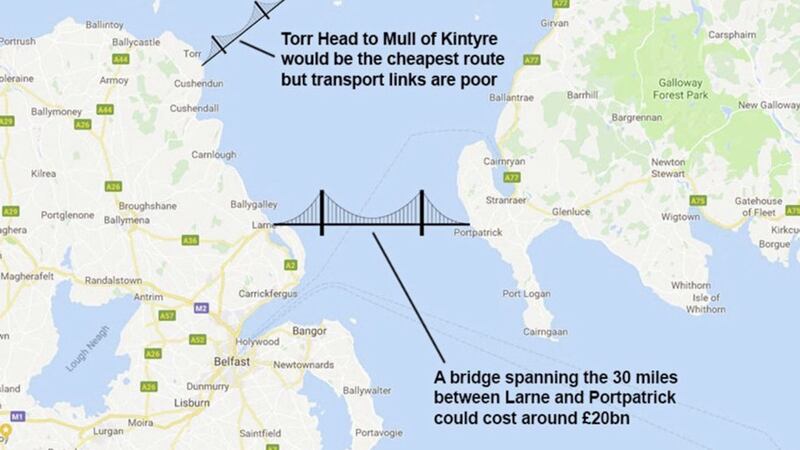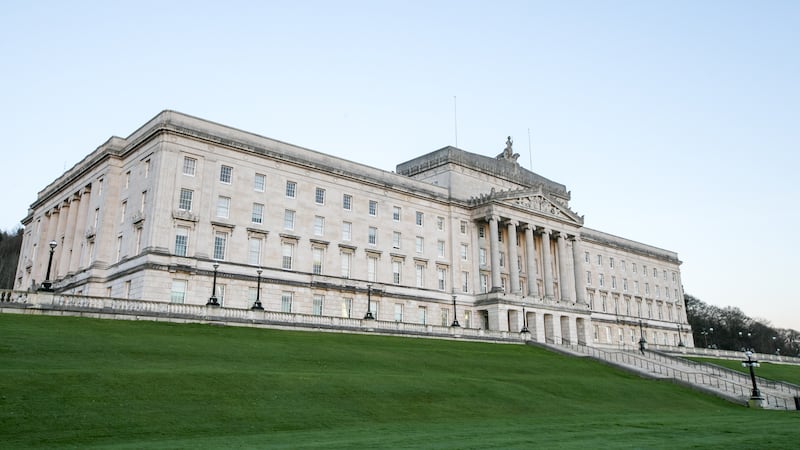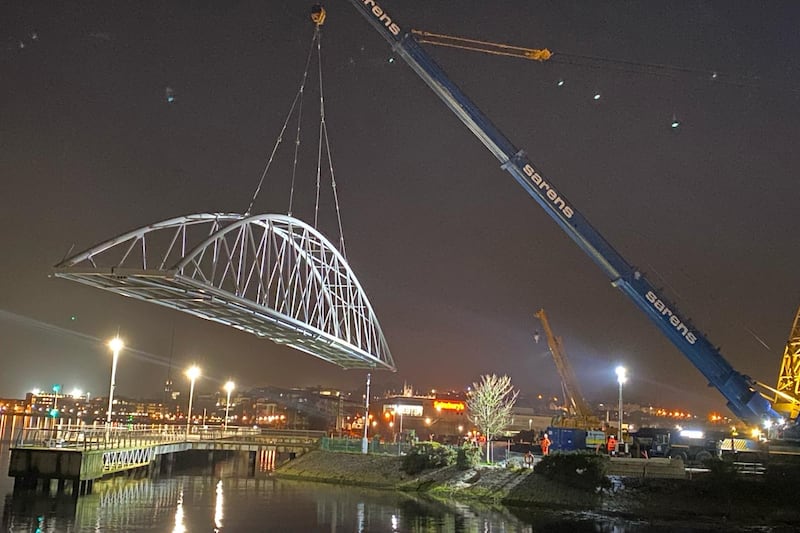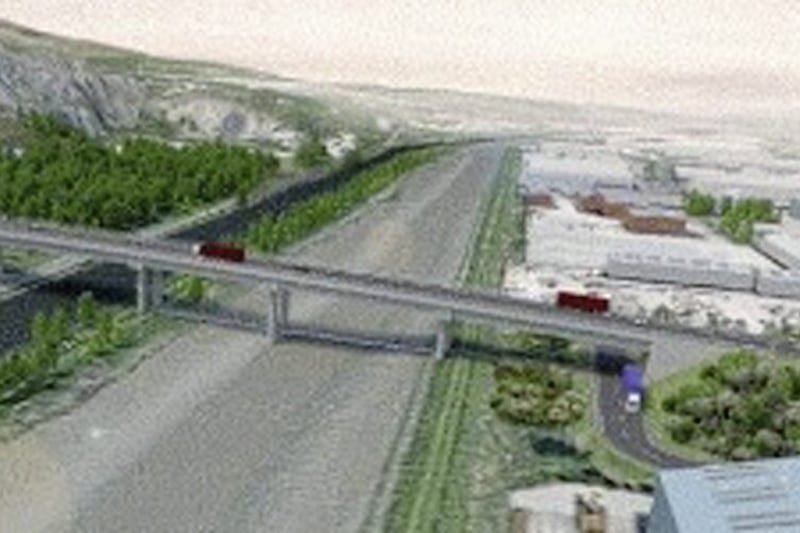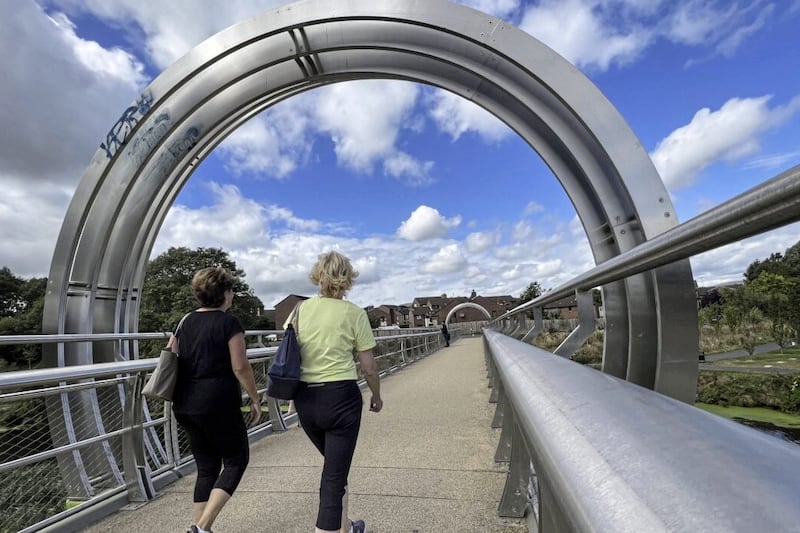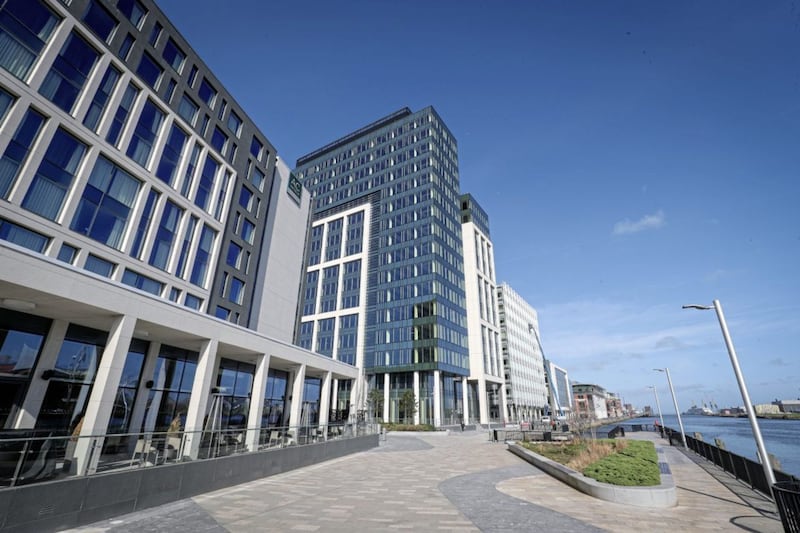BUILDING a link between Northern Ireland and Scotland might just be a 'bridge too far', a report by a senior economist suggests.
Dr Esmond Birnie, of Ulster University, has carried out a detailed analysis into the feasibility and possible economic benefits of building a bridge between the two near neighbours.
Dr Birnie is a former Ulster Unionist assembly member and a special adviser to the then party leader, Sir Reg Empey.
The plan has previously attracted support from various quarters, including the DUP and the Scottish government.
In 2015, the DUP proposed a feasibility study and last year party leader Arlene Foster told an Orange Order parade in Scotland there was "growing support" for the project.
Meanwhile, the Scottish government said last March that it was ready to begin discussions about it.
However, Dr Birnie has, in the main, thrown cold water on the economic benefits of such a connection as well as highlighting other practical drawbacks.
Technically, such a construction would "probably" be feasible he argued, pointing to bridges of similar length in the US (24 miles) and China (22 miles).
But he added: "Something can be technologically feasible without providing economic benefits greater than the costs. The Concorde supersonic aircraft and post-War British atomic power stations may have been engineering marvels but they were far from commercially viable and might well have 'failed' the test of an economic cost benefit analysis."
A tunnel alternative, such as the Channel Tunnel, is unlikely to work, he said, given the deep Beaufort Dyke in the North Channel which is the biggest UK offshore dumping ground for Second World War munitions.
As for location, Dr Birnie said likely starting points are either Larne or Bangor over to Portpatrick in Dumfries and Galloway - around 21 miles.
He pointed out: "There is a strong argument for saying it should not be from North Antrim (say Ballycastle) across to the Mull of Kintyre: only 12 miles of sea but implying the need to use a very long and slow road to drive on to Glasgow - about 150 miles or 3.5 hours."
Dr Birnie estimated that the cost would be very large - around £21 billion including infrastructure connections - with a construction period of around 10 years and a life span of 50 years.
In terms of economic benefits - including lower transport costs and reduced travel time - he calculated that a bridge would represent an annual gain to the UK economy of up to £400m (more than half in Northern Ireland) but doubted this would cover the initial outlay.
As for who would pay for the bridge, Dr Birnie reasoned that even with a high level of tolls, it was "unlikely the bridge could be made into a commercial proposition" and that outside funders would be needed.
In his conclusions, the economist stressed that a "rigorous and detailed evaluation" of any such proposal was needed.
He said it was hard to see how the economic benefits could exceed the costs and also pointed out that a 10-year construction phase boost was not necessarily a strong argument for going ahead.
"The £20bn could be spent in other ways which could have similar or even bigger construction activity implications," he added.
His doubts echo those of James Duncan a retired offshore engineer from Edinburgh, who last year wrote a letter to the Sunday Times ridiculing the bridge plan after it was refloated by former foreign secretary Boris Johnson.
He argued that a bridge had never been built across "such a wide-deep and stormy stretch of water", adding that "in total the bridge would require 54 towers, of heights never achieved anywhere in the world".
